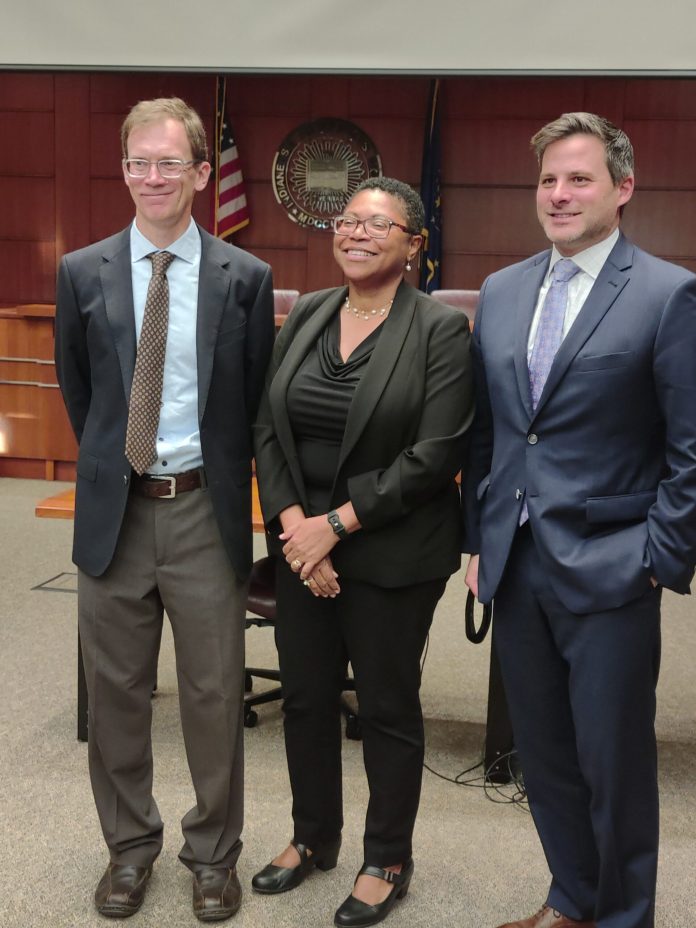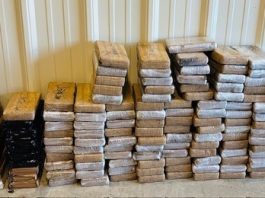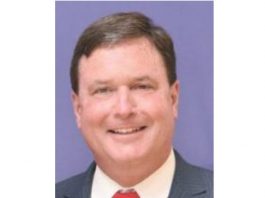HISTORY HIGHLIGHT: Sen. Birch Bayh’s pioneering effort for permanent federal disaster relief
By Marilyn Odendahl
The Indiana Citizen
October 15, 2023
After every natural disaster, Americans now expect the federal government to lead the relief effort and provide aid to the victims.
But federal help was not always the norm. Washington, D.C., rarely got involved in the recovery and rebuilding process before the middle of the 20th century.
The legislation that created a permanent federal response to major disasters started in Elkhart County in 1965 with an initiative by the late Sen. Birch Bayh, D-Indiana.
During the 2023 Birch Bayh Lecture on Tuesday evening at Indiana University Robert H. McKinney School of Law, Andrew Morris, associate professor of history at Union College in Schenectady, New York, detailed Bayh’s role in pushing for federal disaster relief. His lecture, “Birch Bayh, Hurricane Camille, and the New Politics of Disaster Relief in Nixon’s America,†was based on his forthcoming book about disaster relief policy.
Morris’ book takes a broad look at how events and political maneuverings produced the federal Disaster Relief Act of 1970 that President Richard Nixon signed.
“My book is not focused on the senator solely,†Morris told the IU McKinney audience, “but I think, and I hope, one of the outcomes of that is it justly recognizes this part of his legacy.â€
A key part of that legacy was how Bayh, who died in 2019, was able to marshal diverse interests to support national disaster relief legislation. The coalition that championed the bill to Nixon’s desk included Great Society liberals and their staunch opponents, southern Democrats.
Sen. Edmund Muskie, D-Maine, “got a lot of the credit in the short term (for the passage of the bill),†Morris said, “but Bayh deserves more of it in terms of just the legislative craftsmanship.â€
Tornado victims in Indiana
The tornado that barreled through Elkhart County on Palm Sunday in 1965 was part of a large outbreak of tornadic activity across the Midwest that day. In Elkhart County alone, 137 people were killed and 1,700 were injured.
Bayh, eyeing federal assistance, got President Lyndon Johnson to visit Elkhart and see, first hand, the devastation. At that time, whenever a natural disaster hit, victims did not get help from the federal government. They had to rebuild their lives by using their savings and insurance, along with whatever resources their state, their community and the American Red Cross had available.
However, Congress did pass special legislation offering federal aid to the survivors of the 1964 earthquake in Anchorage, Alaska, and Hurricane Betsy, which slammed New Orleans in 1965. Bayh advocated for “quake-type aid†for his constituents in northern Indiana, too, but Capitol Hill did not have the political will.
In an interview with Morris about 10 years ago, Bayh said the resources being offered were “utterly inadequate†and the Elkhart County residents were not getting the kind of meaningful assistance that would enable them to become productive citizens again.
“It was nothing to what the great purse strings of Uncle Sam could provide,†Bayh was quoted as saying.
Morris said Bayh was a “Great Society liberal,†who believed that the United States, as a wealthy and powerful country, could do more for disaster victims.
Appalled by what Hoosiers were going through, Morris said Bayh “made it part of his legislative mission to pursue a policy that would create an ongoing federal program that would be available to victims of any major disaster, not just the disasters in places that happened to have the most politically connected people in Congress.â€
The Indiana Democrat’s advocacy, Morris pointed out, came at a political moment of growing expectations of federal government action. Congress had enacted legislation creating Medicare and Medicaid in 1965, along with the Civil Rights Act of 1964 and the Voting Rights Act of 1965.
Bayh introduced his federal disaster relief bill in 1966. When it died, he brought it back in 1967, and, again, in 1968 and 1969.
Morris said the political incentives tied to natural disaster relief caused Bayh’s bill to stall. Those senators who sat on the House Public Works Committee, which oversaw any disaster relief legislation, liked writing very specific bills for their colleagues whose constituents were stricken by a tornado, earthquake, hurricane or other disaster. Primarily, the committee members knew that in return for the federal assistance, they would extract political favors.
“It was simple congressional log rolling,†Morris said.
‘Glorious hurricane’
Having studied Bayh’s senatorial papers stored in the Modern Political Papers Collection at Indiana University-Bloomington, Morris said he could see Bayh’s frustration spilling into his memos. His disaster bill could not overcome politics.
But then on Aug. 17, 1969, Hurricane Camille, a Category 5 hurricane, wiped out the Gulf Coast. A staffer on the public works committee called it a “glorious hurricane.â€
“It was not glorious in terms of death and destruction,†Morris explained, “but in terms of how it disrupted the policy environment and created an opportunity for them to seize the moment and push through this legislation.â€
The hurricane’s destruction overwhelmed the ability of local and state governments to respond, especially in the little Mississippi towns that were devastated by the storm. Powerful congressmen from the Gulf Coast started clamoring for a federal relief package.
Their call for disaster assistance came at the same moment Nixon’s aides were trying to strengthen the Republican Party in the South, Morris said. As part of this southern strategy, Nixon was wooing conservative Southern Democrats to get them to join the Republicans.
Nixon capitalized on the opportunity by visiting Mississippi in September 1969 and promising the full force of federal resources to rebuild from Camille. The president and southern congressmen picked up Bayh’s bill. They kept all the programs and support written into the legislation but stripped the language making the relief a permanent function of the federal government and, as they had done in the past, limited the assistance to current disaster victims.
In November of 1969, two civil rights organizations released a report chronicling the aid programs for Camille victims. The study showed Blacks and poor whites were not receiving the same level of federal funds or support as middle class and wealthy whites.
The revelations created a political firestorm. Bayh and Muskie held hearings in Mississippi in January 1970 and for three nights on national television, the stories of unequal suffering and discrimination were told.
Bayh used the momentum from those hearings to build support and finally pass the bill he first crafted after the 1965 tornado that caused havoc in Indiana.
After the lecture, Morris explained to The Indiana Citizen how Bayh was able to form the coalition that pushed his bill forward.
Bayh and Muskie, Morris said, engaged in a “good cop bad cop†routine. Muskie was hammering at the hearings and decrying the discrimination by the Red Cross and the state. Meanwhile Bayh decided to “play the inside game to be more diplomatic.â€
Bayh realized if his bill was going to move, he needed the support of his much more racially conservative colleagues in Congress. He had discussions behind closed doors with powerful southern Democrats, telling them all he wanted was a national disaster relief bill, and he let Muskie take the heat from the southern lawmakers over the civil rights issues.
“It’s actually strategically quite good,†Morris said. “(Bayh) had genuine civil rights credentials. He was taken seriously by the civil rights community. But once he got into … the legislative deal-making, he was able to thread that needle in a really, really interesting way.â€
Dwight Adams, a freelance editor and writer based in Indianapolis, edited this article. He is a former content editor, copy editor and digital producer at The Indianapolis Star and IndyStar.com, and worked as a planner for other newspapers, including the Louisville Courier Journal.Â




